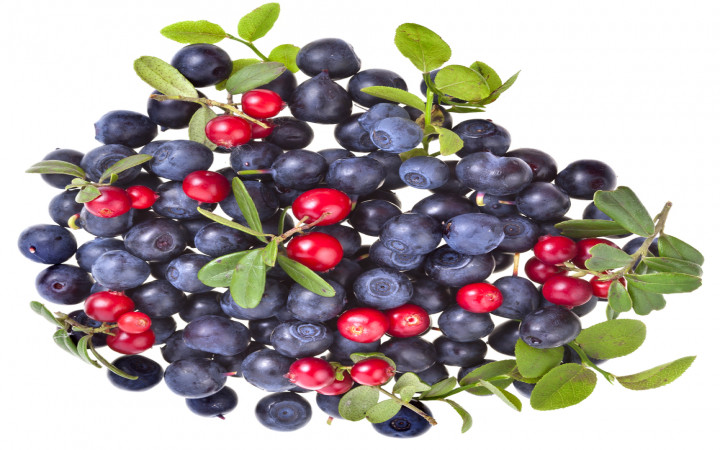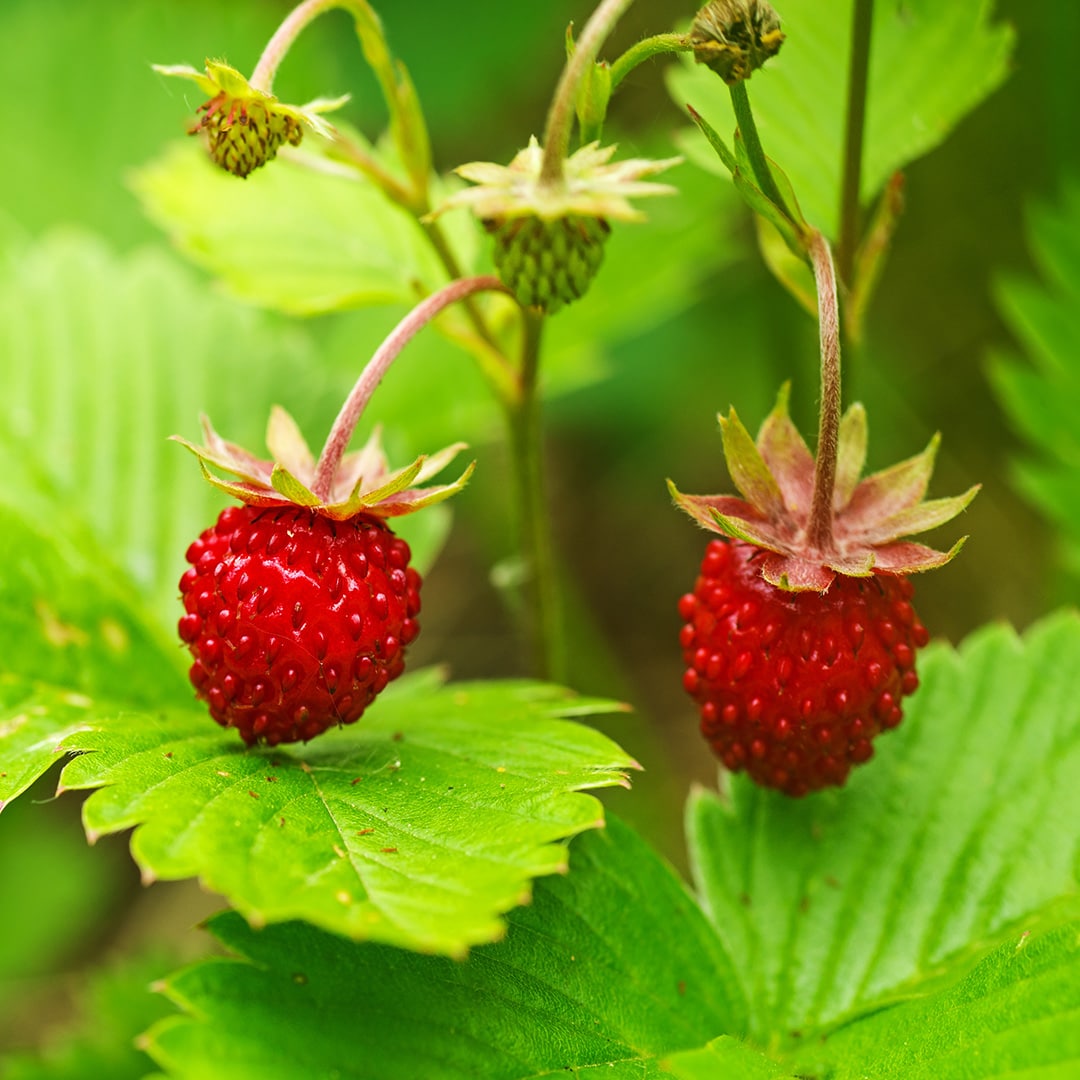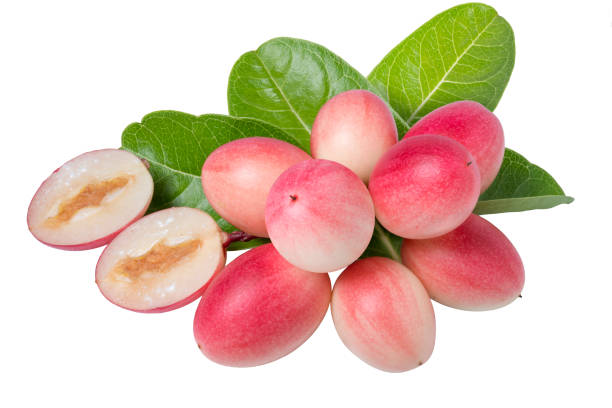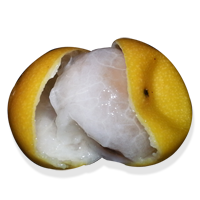Fruits Home  Full List of Fruits
Full List of Fruits  Bacupari fruit
Bacupari fruit
Bacupari is a tropical fruit found in the Amazon regions of South America. It has a yellow and orange color to it and tastes sweet. The trees in which these fruits grow are roughly 14m tall when fully grown. It has an erect trunk and can withstand any external forces of nature and also looks good with its big green leaves which are very dense in the crown of the tree and provide ample shade. It naturally grows in the Amazonian forest which has a good fertile soil; however it can be cultivated separately in domestic regions in nutrient-rich soil.
The bacupari trees are classified under the garcinia genus and surprisingly they yield fruits only after 7 years or more, although a fully grown tree can bear more than 500 fruits. One bacupari fruit contains about 3 to 4 seeds and for planting new trees these seeds should be planted immediately because they lose their productiveness very soon.
The leaves of the Bacupari are glossy green and or of medium size ranging from 10 -20cm long. The flowers are of white color with a nice fragrance and are arranged in an axillary cluster manner. There are several ways the bacupari fruit can be consumed.
The native people in regions like Brazil, Peru, Argentina, Venezuela, Paraguay and Bolivia where the bacupari originated, eat this fruit whole along with the arils. The fleshy part of the fruit is used in many recipes worldwide to make a variety of jams and desserts, as well as recommended for its nice smell. The fruit is meant to be eaten fresh and the bark can also be consumed. The aril which is the fleshy part covering the seed can also be eaten for a good nutrient intake. Since it is a pulpy fruit it is widely used to make juices and in cocktails, as well jelly can be made from it.


The bacupari is mainly distinguished for its medicinal purposes. The leaves of the bacupari are claimed to have powerful nutrients to heal cancer, apart from which it also can be used to treat skin disorders and urinary tract infections. The fruit is highly recommended for people suffering from hormonal imbalances in the body, due to its detoxifying nutrient content which is essential for a well built immune system. Another important remedial use of the bacupari fruit is for curbing obesity as it has been proven that the garcinia content in the fruit has fat neutralizing properties. Additional research needs to be done to discover the full potential and beneficial uses of the bacupari; however as of now no side effects have been noticed after its consumption.







 Full List of Fruits
Full List of Fruits  Bacupari fruit
Bacupari fruitBacupari Fruit
Scientific Name : Garcinia gardneriana
Bacupari is a tropical fruit found in the Amazon regions of South America. It has a yellow and orange color to it and tastes sweet. The trees in which these fruits grow are roughly 14m tall when fully grown. It has an erect trunk and can withstand any external forces of nature and also looks good with its big green leaves which are very dense in the crown of the tree and provide ample shade. It naturally grows in the Amazonian forest which has a good fertile soil; however it can be cultivated separately in domestic regions in nutrient-rich soil.
The bacupari trees are classified under the garcinia genus and surprisingly they yield fruits only after 7 years or more, although a fully grown tree can bear more than 500 fruits. One bacupari fruit contains about 3 to 4 seeds and for planting new trees these seeds should be planted immediately because they lose their productiveness very soon.
The leaves of the Bacupari are glossy green and or of medium size ranging from 10 -20cm long. The flowers are of white color with a nice fragrance and are arranged in an axillary cluster manner. There are several ways the bacupari fruit can be consumed.
The native people in regions like Brazil, Peru, Argentina, Venezuela, Paraguay and Bolivia where the bacupari originated, eat this fruit whole along with the arils. The fleshy part of the fruit is used in many recipes worldwide to make a variety of jams and desserts, as well as recommended for its nice smell. The fruit is meant to be eaten fresh and the bark can also be consumed. The aril which is the fleshy part covering the seed can also be eaten for a good nutrient intake. Since it is a pulpy fruit it is widely used to make juices and in cocktails, as well jelly can be made from it.
| Nutrients | Amount |
|---|---|
| Carbohydrate | 14.9 gm |
| Proteins | 0.8 gm |
| Vitamins | |
| Vitamin B2 | 0.04 mg |
| Vitamin B6 | 0.05 mg |
| Vitamin C | 10.3 mg |
| Phosphorous | 20 mg |
| Ferrous | 0.2 mg |
| Lipids | 0.7 mg |
| FerrousSaturated Fatty Acid | 0.3 mg |
| Mono Unsaturated Fatty Acid | 0.1 mg |
| Poly Unsaturated Fatty Acid | 0.1 mg |
| Minerals | |
| Calcium | 6 mg |
| Potassium | 128 mg |
| Fiber | 1.7 gm |
| Water | 83.1 g |
| Energy | 62 Kcal |
The bacupari is mainly distinguished for its medicinal purposes. The leaves of the bacupari are claimed to have powerful nutrients to heal cancer, apart from which it also can be used to treat skin disorders and urinary tract infections. The fruit is highly recommended for people suffering from hormonal imbalances in the body, due to its detoxifying nutrient content which is essential for a well built immune system. Another important remedial use of the bacupari fruit is for curbing obesity as it has been proven that the garcinia content in the fruit has fat neutralizing properties. Additional research needs to be done to discover the full potential and beneficial uses of the bacupari; however as of now no side effects have been noticed after its consumption.
The bacupari otherwise known as Laranjinha or Uvacupari in some of the amazonian basin regions have been used thousands of years by the native people for its healing properties including external wounds and immunity against various diseases spreading in the hot tropics of South America.
Latest scientific research has shown that 7-epiclusianone, an anti-cancer chemical compound was found in the Garcinia brasiliensis (bacupari) and it can be used to curb cancer cells from spreading to all parts of the body. Also more scientific experiments are underway to use this 7-epiclusianone to wholly remove cancer tumors without radiation therapy. This was hypothesized because the Amazonian tribes have been consuming the bacupari fruit for many generations and after thorough analysis of their DNA, none of them have not been diagnosed with cancer nor were their forefathers. Hence the bacupari has been claimed to have been the main reason for this powerful immunity of the South Americans which the civilized population in the rest of the world did not carry.
Latest scientific research has shown that 7-epiclusianone, an anti-cancer chemical compound was found in the Garcinia brasiliensis (bacupari) and it can be used to curb cancer cells from spreading to all parts of the body. Also more scientific experiments are underway to use this 7-epiclusianone to wholly remove cancer tumors without radiation therapy. This was hypothesized because the Amazonian tribes have been consuming the bacupari fruit for many generations and after thorough analysis of their DNA, none of them have not been diagnosed with cancer nor were their forefathers. Hence the bacupari has been claimed to have been the main reason for this powerful immunity of the South Americans which the civilized population in the rest of the world did not carry.
The Bacupari plant can be cultivated only in tropical conditions which has a good amount of rainfall as well as ample exposure to the sun. The seeds need to be planted in a short span of time after removal from the fruit and the plantation should be done giving sufficient space between the seedlings. The seeds will sprout into saplings in 60-80 days and after that it will continue growing in a slow pace.
The wood of the Bacupari is soft compared to other trees and are not that heavy as well. It appears in colors like dark yellow- brown combination, gray or pink-brown combination. There is not much odor from the bacupari wood. However extensive studies have shown that the wood of the bacupari tree tends to decay at a rapid speed and are more prone to be attacked by insects and termites. It is used mainly to make tool handles, small furniture, flooring, fence posts etc. One of the main reasons the Bacupari wood is used for making small furniture or equipments is because it is easy to cut even without wood sawing machines but at the same time it is durable for a certain amount of time.
The wood of the Bacupari is soft compared to other trees and are not that heavy as well. It appears in colors like dark yellow- brown combination, gray or pink-brown combination. There is not much odor from the bacupari wood. However extensive studies have shown that the wood of the bacupari tree tends to decay at a rapid speed and are more prone to be attacked by insects and termites. It is used mainly to make tool handles, small furniture, flooring, fence posts etc. One of the main reasons the Bacupari wood is used for making small furniture or equipments is because it is easy to cut even without wood sawing machines but at the same time it is durable for a certain amount of time.


















